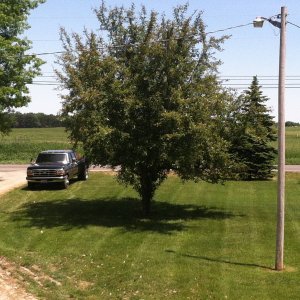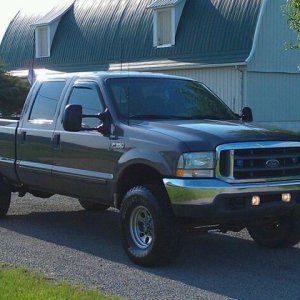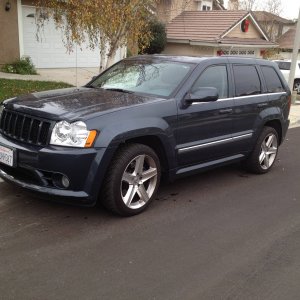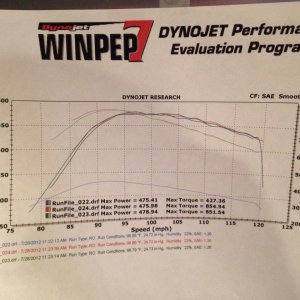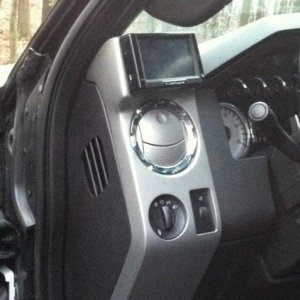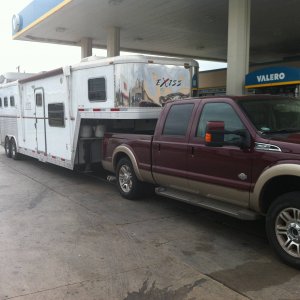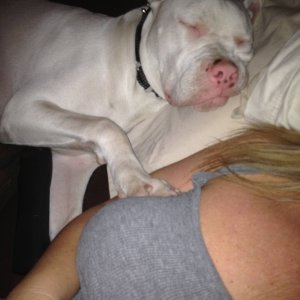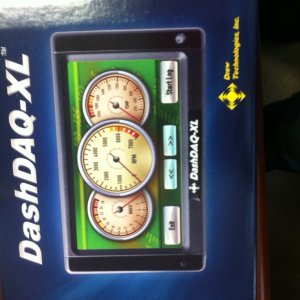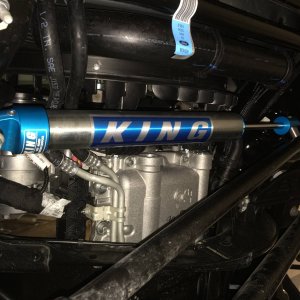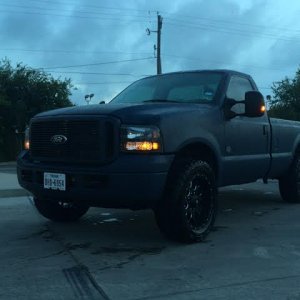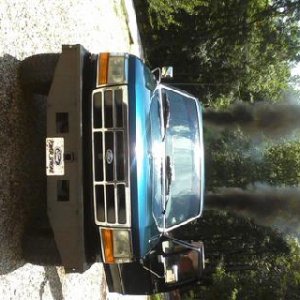Great info On that thank you. I’m not saying my PIS 175/80’s started idling rough and haze when cold now plus my mileage is not great. I’m half tempted to try a hybrid and see if there is a difference. I have tried 4 different tuners and PHP has been the best so far
You are using an out of date browser. It may not display this or other websites correctly.
You should upgrade or use an alternative browser.
You should upgrade or use an alternative browser.
Who has had 180/30 or 180/80 for towing
- Thread starter BS Hauler
- Start date
BS Hauler
New member
Great info guys.
So sounds like a 238/80 or 250/80 would be a better choice over the 180/80.
I am running the 1.0 housing on the 38R. I see what people say about the turbo
Noise gets annoying after awhile.
It looks like it gets to be a balancing act between PW and ICP
So sounds like a 238/80 or 250/80 would be a better choice over the 180/80.
I am running the 1.0 housing on the 38R. I see what people say about the turbo
Noise gets annoying after awhile.
It looks like it gets to be a balancing act between PW and ICP
BS Hauler
New member
At what point does it become necessary to upgrade to better valve springs as long as you stay under 3,000 rpm's
gnxtc2
Active member
I have 175/80s with a BASB turbo. Towed in excess of 20K with no issues. The rest of the build up is in the sig.
What is comes down is tuning. You can have the best injector but if the tuning is off, you're going to hate life.
Billy T.
[email protected]
What is comes down is tuning. You can have the best injector but if the tuning is off, you're going to hate life.
Billy T.
[email protected]
Zeb
New member
At what point does it become necessary to upgrade to better valve springs as long as you stay under 3,000 rpm's
This can be argued a million different ways, but on these diesels with notoriously low valve spring pressures, valve float is more a symptom of rpm than boost pressure.
3,000 rpm is still within the design rpm of that motor/cam/valve springs.
I wouldn’t stress out about it.
OBS-Addiction97
Member
I’ve had several different injector setups over the years. I’ve personally ran Pis 200/80s, Pis 300/200s and FFD 400/200s. The 200/80s had good power, but always had very heavy smoke and high Egts.
The 300/200s were my favorite set up by far, pulled like a beast with the 468, although irrelevant to smaller A codes. I won’t even bring up the 400/200s, they were used and messed up.
My old man runs Pis 175/80s on his 00’ Sd with a 38r. He tows a 5th wheel all over the US with it. No real complaints to speak of other than slightly higher Egts in Over drive. He has 35s with 3.73s and is currently regearing the truck to 4.33s iirc.
I think my next set will be 200/30s for my 96 dually. I’ve read nothing but great things about those over the years.
The 300/200s were my favorite set up by far, pulled like a beast with the 468, although irrelevant to smaller A codes. I won’t even bring up the 400/200s, they were used and messed up.
My old man runs Pis 175/80s on his 00’ Sd with a 38r. He tows a 5th wheel all over the US with it. No real complaints to speak of other than slightly higher Egts in Over drive. He has 35s with 3.73s and is currently regearing the truck to 4.33s iirc.
I think my next set will be 200/30s for my 96 dually. I’ve read nothing but great things about those over the years.
Last edited:
psduser1
Well-known member
I guess what I don’t get is why only run a 30% nozzle on a 200cc injector? Will you ever be able to fully empty it? Is it just because it’s the smallest hybrid? But if that’s the case then why not do a 80%. Nozzle
I could see a 30% nozzle on an "a" code, just for ease of tuning with a small hpop, but on a hybrid-and I dont know if it's even available at 200 cc-why would a guy go that big of capacity just to limit total flow with that small of nozzle?
Our other truck has 205/100% injectors, with a literal pos 38r, and it works, on flatland towing. Gotta watch egts, cause the turbo is damaged, but not unmanageable by any means.
If I had the ambition to even just do a replacement 38r, or step up to a t4, I could RIP the egt gauge out and throw it away.
Tuning is everything, and there is 20 yrs of practice out there. If a guy cant tune 100% nozzles, even over the phone, find a new guy, or figure out what's wrong with you rig. Imo, of course.
OBS-Addiction97
Member
I guess what I don’t get is why only run a 30% nozzle on a 200cc injector? Will you ever be able to fully empty it? Is it just because it’s the smallest hybrid? But if that’s the case then why not do a 80%. Nozzle
I’ve ran the 200s with an 80% nozzle. They made great power, but where Smokey and had high Egts. It very well may have been the tuning, but that was my personal experience.
In my case with wanting to try the 200/30s, I’m not concerned with emptying out the injector fully. They’d be on a manual Work truck. All I’m looking for is a all around good injector that doesn’t starve the stock hpop.
The Brad
New member
I’ve ran the 200s with an 80% nozzle. They made great power, but where Smokey and had high Egts. It very well may have been the tuning, but that was my personal experience.
In my case with wanting to try the 200/30s, I’m not concerned with emptying out the injector fully. They’d be on a manual Work truck. All I’m looking for is a all around good injector that doesn’t starve the stock hpop.
My 200/80s were hot and smokey until I ditched my 38r for a 364.5. Clean and cool now with no tuning changes.
OBS-Addiction97
Member
My 200/80s were hot and smokey until I ditched my 38r for a 364.5. Clean and cool now with no tuning changes.
I ran my 200/80s with a D66 and a 468. I’ll just say I like my
3/200s much better.
jeremiahmercier
Member
Turbo makes a lot of difference, this setup with D66 and 38r ran hot, swapped to BASB and I swear it was the end all be all turbo for a 7.3l setup for towing/haulingI have 175/80s with a BASB turbo. Towed in excess of 20K with no issues. The rest of the build up is in the sig.
What is comes down is tuning. You can have the best injector but if the tuning is off, you're going to hate life.
Billy T.
[email protected]
Sent from my SM-G930V using Tapatalk
JDelaney
Member
No one ever complains about a BASB or 364.5. I would encourage a guy to go that route before changing gears. Been there, done that. Started at 3.73, went to 4.30, installed a 364.5, then went back to 3.73s.
The Brad
New member
This can be argued a million different ways, but on these diesels with notoriously low valve spring pressures, valve float is more a symptom of rpm than boost pressure.
3,000 rpm is still within the design rpm of that motor/cam/valve springs.
I wouldn’t stress out about it.
What about drive pressure and lifter jacking with 2 square inches of valve area and seat pressure somewhere in the 70s?
Zeb
New member
Drive pressure is a moot point when it comes to valve float on a turbo motor.
Think of it this way, even if you’ve got 80 psi drive pressure on the exhaust stroke, you’ve got the piston coming up and that is creating significantly more pressure below the valve (trying to force it closed) than there is drive pressure trying to hold it open.
Rpm is a bigger factor because a weak/low pressure spring reacts slower.
Think of it this way, even if you’ve got 80 psi drive pressure on the exhaust stroke, you’ve got the piston coming up and that is creating significantly more pressure below the valve (trying to force it closed) than there is drive pressure trying to hold it open.
Rpm is a bigger factor because a weak/low pressure spring reacts slower.
The Brad
New member
Drive pressure is a moot point when it comes to valve float on a turbo motor.
Think of it this way, even if you’ve got 80 psi drive pressure on the exhaust stroke, you’ve got the piston coming up and that is creating significantly more pressure below the valve (trying to force it closed) than there is drive pressure trying to hold it open.
Rpm is a bigger factor because a weak/low pressure spring reacts slower.
The exhaust valve is roughly 2.2 square inches in area. 80psi drive pressure would act against roughly 78lbs of seat pressure with 176lbs of force. Add to that, the hydraulic pressure acting on the lifter and you’ll get lifter jacking. The opposing pressure in the cylinder is only happening half of the time, during the compression and power strokes, but that’s assuming that the valve was able to seal on the seat with inadequate seat pressure and a pumped up lifter.
Zeb
New member
The exhaust valve is roughly 2.2 square inches in area. 80psi drive pressure would act against roughly 78lbs of seat pressure with 176lbs of force. Add to that, the hydraulic pressure acting on the lifter and you’ll get lifter jacking. The opposing pressure in the cylinder is only happening half of the time, during the compression and power strokes, but that’s assuming that the valve was able to seal on the seat with inadequate seat pressure and a pumped up lifter.
I hear what your saying, and I think we could go back and forth about this for a long time.
Both of us would agree that 80 psi drive pressure is very high, and that we’d probably never see that on a single turbo turbo, close to stock rpm 7.3. On the same token, take a fairly stock 7.3 and rev it hard, even with low boost and drive pressure, and you can see valve float.
Considering that, I guess I maintain that valve float is more about rpm than it is about boost or drive pressure.
The Brad
New member
I hear what your saying, and I think we could go back and forth about this for a long time.
Both of us would agree that 80 psi drive pressure is very high, and that we’d probably never see that on a single turbo turbo, close to stock rpm 7.3. On the same token, take a fairly stock 7.3 and rev it hard, even with low boost and drive pressure, and you can see valve float.
Considering that, I guess I maintain that valve float is more about rpm than it is about boost or drive pressure.
It doesn’t have to be one or the other. IMO, springs are needed once drive pressure exceeds 40psi and/or rpm over stock.

